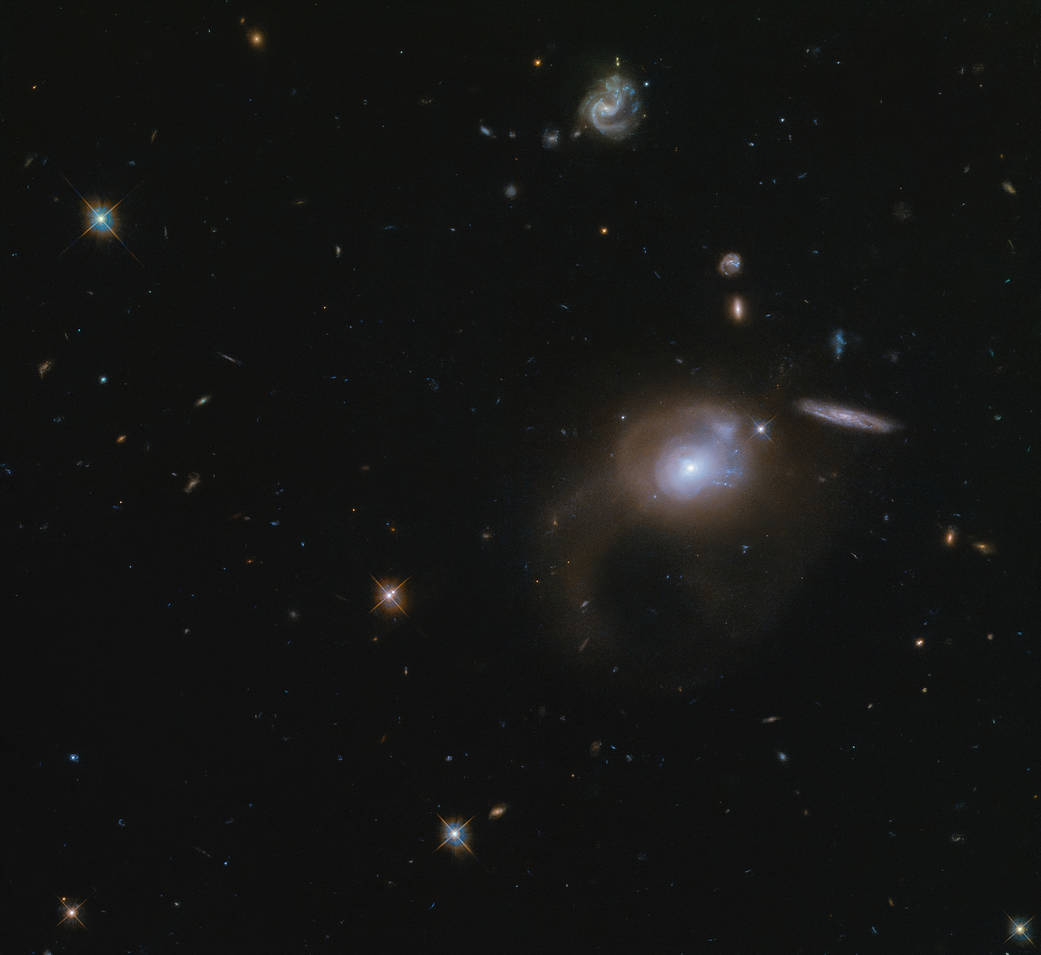This large expanse of space captured with the Hubble Space Telescope features the galaxy SDSS J225506.80+005839.9. Unlike many other extravagant galaxies and stunning nebulae imaged by Hubble, this galaxy does not have a short, popular name, and is only known by its long name given in the Sloan Digital Sky Survey, which refers to its coordinates in the sky. This galaxy – visible in the center right portion of the image – and its many wondrous neighboring galaxies lie in the constellation of Pisces (the Fish).
This is a post-starburst galaxy, which is a product of galaxies that have merged within the past billion years. This merger event drove gas to the galaxy’s center and created an abundance of new stars, of which the brightest are visible in the remnant galaxy’s core. The visible shells and tails surrounding the galaxy are also a result of this merger event.
Residing far beyond our own Milky Way at a distance of about 500 million light-years, it is almost impossible to glimpse this galaxy without the assistance of Hubble, and, like thousands of similar faint and very distant galaxies, it was only discovered and cataloged in recent years. Many millions of galaxies still await our discovery as we build a wondrous picture of our night sky.
Text credit: European Space Agency (ESA)
Image credit: ESA/Hubble & NASA, A. Zabludoff
这张由哈勃太空望远镜拍摄的广阔太空照片展示了星系SDSS J225506.80+005839.9。与哈勃所拍摄的其他许多奢华的星系和令人惊叹的星云不同,该星系没有一个简短的流行名称,只有通过斯隆数字天空调查中给出的长名称才能知道,该名称指的是天空中的坐标。这个星系(在图像的右中间部分可见)及其许多奇妙的邻近星系位于双鱼座(鱼)中。
这是一个星爆后的星系,是在过去十亿年里合并的星系的产物。这一合并事件将气体推到星系中心,并创造了大量的新恒星,其中最明亮的恒星出现在残余星系的核心。星系周围可见的贝壳和尾巴也是这次合并事件的结果。
它距离我们银河系很远,距离我们约有5亿光年,如果没有哈勃望远镜的帮助,几乎不可能瞥见这个星系,就像成千上万个类似的暗淡而又非常遥远的星系一样,它是最近几年才被发现并编录的。当我们绘制夜空奇妙的照片时,仍有数百万个星系在等待我们的发现。
文字来源:欧洲航天局(ESA)
图片来源:ESA/Hubble & NASA, A. Zabludoff



